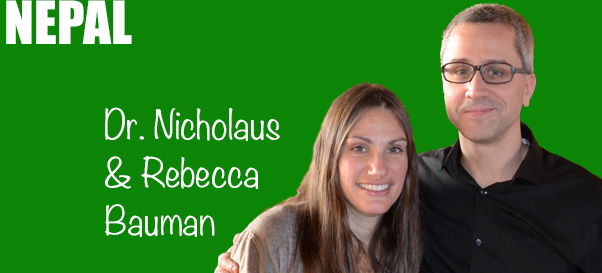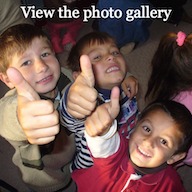 I’ve been meaning to write some kind of “what-am-I-doing-here” kind of post… but it just keeps evading me. Instead I’d like to share a particular story, whose ending I don’t yet know. And I’ll try to keep the medical-ese to a minimum…
I’ve been meaning to write some kind of “what-am-I-doing-here” kind of post… but it just keeps evading me. Instead I’d like to share a particular story, whose ending I don’t yet know. And I’ll try to keep the medical-ese to a minimum…
A small baby girl was born at 35 weeks, and around the 3rd day of life the surgery team was consulted because her abdomen was distended, and she was vomiting up feeds.
Her X-ray showed that her bowel seemed to be blocked. Eventually we were able to get a barium enema (where we put some X-ray dye up the bottom end which can be helpful to make the diagnosis). She had a micro-colon, showing that her large bowel had not been used at all, which helped us make the diagnosis.
There was a bit of a delay in trying to figure out what she had: the more common thing would’ve been perhaps a condition called Hirschprungs disease, where the large bowel doesn’t work properly, and causes an obstruction. The enema and X-rays suggested that she had something a bit more serious: jejunal atresia.

The skinny tortuous white line is a “micro” large-bowel which hasn’t been used. the black circular blobs around it are stomach and small bowel filled with air that can’t get through.
Jejunal atresia is a condition where sometime during the baby’s development, part of her bowel dies, causing a blockage. If this insult is small enough, the baby will survive in-utero, but will have problems after birth when it starts to feed.
I had great help from some paediatric surgeons -> 1 from Canada, another from Kenya, 1 in Kathmandu and then a recent visiting paediatric surgeon helped by involving his colleagues. In total we had an email chain of 6 paediatric surgeons, helping us sort this out.
It was clear the child needs surgery: the best location in Nepal was to send her to Kathmandu where there is a paediatric surgeon and hospital that could more effectively deal with her needs, and give her a better chance of survival.
The baby’s mother is in Nepal, and the father is working in the middle east. It is not unusual in these situations for the husband to come home sometimes for no more than 1 month / year. In this sad (but all too common) case the father had not yet met his newborn baby girl. They did however already have 1 child – a healthy boy. A tough situation – since the mother was keen to go to Kathmandu, and the opinion by some staff here is that the decision not to seek more treatment was in part made based on the sex of the child. In reality it was a tough situation for any family: the expense would’ve been huge in Kathmandu, and would’ve been a tremendous burden for the whole family.
After a long conversation with the mother, with the help of a variety of Nepali doctors, and nurses, all of whom did their best to provide some opinion, and some translation also of my thoughts — the father decided that they could not afford to go to Kathmandu. We had told them it would not really be possible to do the surgery at our hospital. At one point it seemed that the family was going to take her home – which would’ve ultimately led to her death in a matter of a few days. These were challenging conversations — especially with regards to consent. (More on that in some other blog post…)
We discussed the options, and with trepidation, the surgery and paediatrics teams offered to do the surgery and provide the medical care as a last resort.
Surgery went well – even though I’ve never done this. We found a “high jejunal atresia”, and did a jejunal resection, tapering enteroplasty, and a Bishop-Koop stoma. Translation: -> this is: “we-cut-out-the-bad-bowel-as-much-as-we-could” and refashioned the bowel together, with a bit of a “blow-hole” to help for feeding. In fact, one of the local residents here helped with with the case, and did all the important parts. It doesn’t seem fair to the child to have to be repairing their bowel when it is only 1cm wide.
Initially she did well, gaining weight, but she has had a heart-wrenching rocky course. Paediatrics sees her first every day, and when we come by sometimes the mother is smiling, and other days wiping away tears. Baby had a good week last week, gaining weight daily, but has now had 2 days of weight loss, and it isn’t always clear why. She has been treated for sepsis-nyd (“infection-we-don’t-know-exactly-where”) on two occasions, and hyponatremia (electrolytes-in-the-blood-out-of-whack) as well. Nothing is easy. One doctor suggested to me, gently and without malice, that probably we should’ve allowed her to go home.
And the journey continues.
Last week when she had been doing well, I promised to the mother and the surgical residents, that we would have a little party (“cool-drinks-and-samosas”) when the child reached her birth weight, which was about 1660 grams. She was about 1480 grams at that point but has lost a bit since. Of course – that weight is somewhat arbitrary — who is to say what other complications might happen after that? She still has a high chance of dying. I think this is one of the reasons babies aren’t named at birth here in Nepal.
But I would really really like to have that party. I’d like to feel that there is an earthly justice that will recognize our attempts to value the life of this girl-baby as much as any other child. But as I sometimes tell my kids “life isn’t fair.” I recognize that this is an unusual situation, and the ‘last-resort’ element of our care has increased the emotions involved, as has my own experience with having our own baby die 2 years ago.
Still, I’m not going to apologize in this case: I really want this baby to live.


